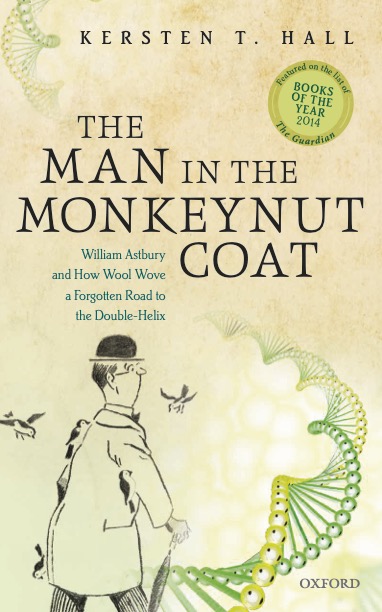100 years ago today saw Canadian scientist Fred Banting hoping to secure his place in medical history with the first ever injection of insulin into a human patient. But the result was disappointing. When he published the work, Banting said that ‘no clinical benefit was evidenced’. Yet only a year later, Banting had received the most prestigious accolade in science – the Nobel Prize – for this medical milestone. How come? What had changed? In a recent interview on BBC 5Live Naked Scientists podcast I explained why…
Category: Uncategorized
‘Insulin – the Crooked Timber’ – review, ‘The Daily Telegraph’ Sat 8th Jan
Delighted that in a review of my new book ‘Insulin – the Crooked Timber’ in Saturday’s ‘Daily Telegraph’, journalist Steven Poole gave Florence Bell, unsung heroine of the DNA story her long overdue mention in a national broadsheet! https://www.telegraph.co.uk/books/non-fiction/insulin-kersten-t-hall-review-jabbing-back-stabbing/
‘Insulin – the Crooked Timber’ – now available to pre-order!
I’m delighted that my new book ‘Insulin – the Crooked Timber’ will be published by Oxford University Press on 13th Jan 2022 to mark the centenary of a medical landmark that has saved countless lives – my own included! It’s a discovery for which I am very grateful and one which, in places, resembles Game of Thrones – enacted with lab coats and test tubes instead of chain mail and poisoned daggers! And it’s now available to pre-order at:
https://www.waterstones.com/book/insulin-the-crooked-timber/kersten-t-hall/9780192855381
https://blackwells.co.uk/bookshop/product/Insulin-by-Kersten-T-Hall/9780192855381
‘Man in the Monkeynut Coat’ – out in Paperback – Jan 2022!
I’m very excited about the paperback release of my book ’ The Man in the Monkeynut Coat’ by Oxford University Press in 2022. The book tells the story of pioneering scientist William Astbury whose X-ray studies of wool wove an unlikely path to unravelling the structure of DNA, the genetic material. When the book was first published in 2014 it was featured on a list of ‘Books of 2014’ in ‘The Guardian’ and was shortlisted for the 2015 British Society for the History of Science Dingle Prize.
But the paperback will be much more than just a reprint of the original. I like to think of it as a ‘director’s cut’ containing material that never made it into the earlier book such as the story of Laszlo Lorand, a young medical student who fled the Communist authorities in his native Hungary to arrive at Astbury’s lab in Leeds in the middle of winter with only a suitcase at his side but went on to figure out how blood clots form. There’s also much more about the intriguing story of how Astbury used X-rays to probe the molecular structure of Mozart’s hair. But perhaps most importantly of all, the book looks at how a coat made from monkey nut proteins has a powerful relevance for a world shaped by Covid-19…
